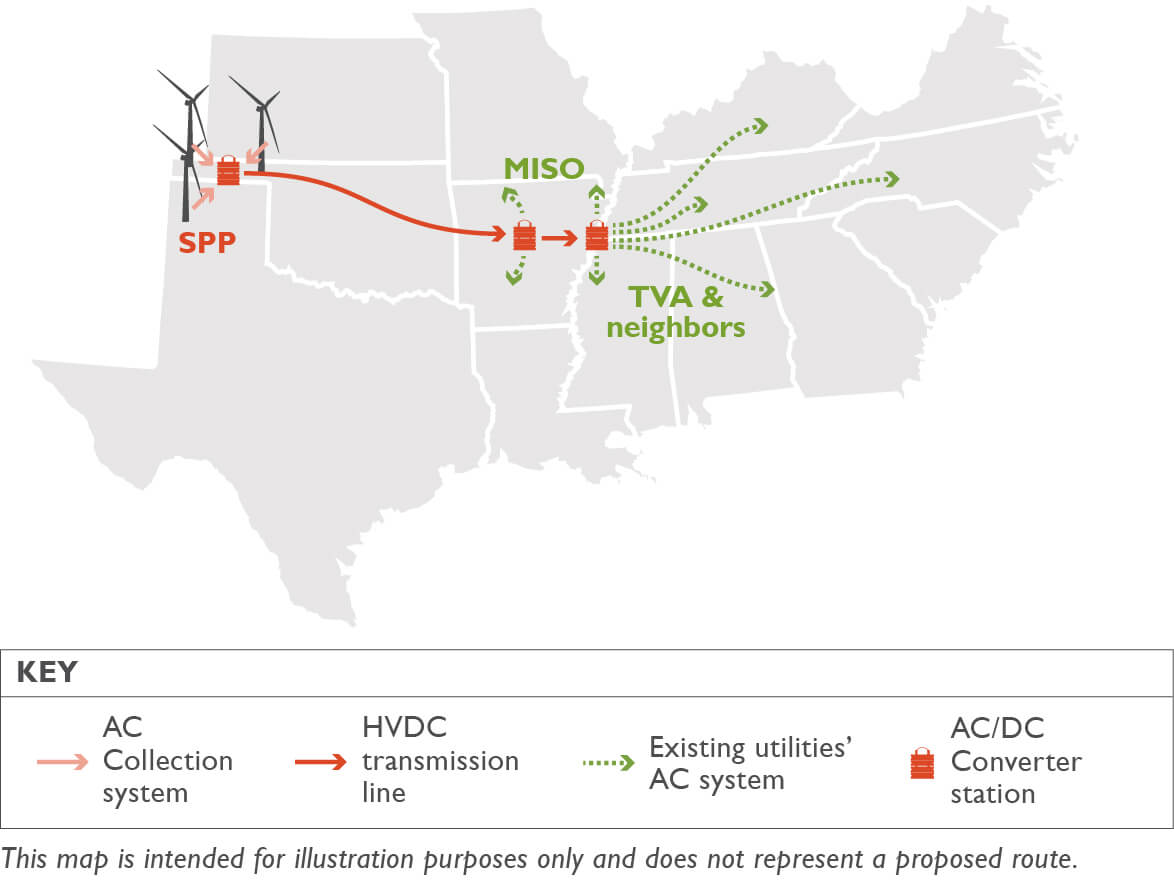The U.S. Department of Energy (DOE) and Clean Line Energy have mutually agreed to terminate their participation agreement for Clean Line’s Plains & Eastern transmission project. The Plains & Eastern Clean Line transmission project is expected to deliver 4 GW of wind power from the Oklahoma Panhandle region to utilities and customers in Tennessee, Arkansas, and other markets in the Mid-South and Southeast.

The Plains & Eastern Clean Line is an approximately 700-mile direct current transmission line that will deliver wind energy from the Oklahoma Panhandle region to the Mid-South and southeastern U.S. It is expected to create thousands of jobs, stimulate economic development, reduce pollution and water consumption, and enhance energy security and system reliability.
NextEra Energy Resources has acquired Plains and Eastern Clean Line Oklahoma LLC and all of the assets for the transmission project in Oklahoma.
Under the recent termination agreement, the DOE will no longer be participating in the project. According to Clean Line, the participation agreement was canceled because of changes in ownership structure and project plans.
Background on DOE review process
On June 10, 2010, the Department of Energy published a Request for Proposals (RFP) for New or Upgraded Transmission Line Projects Under Section 1222 of the Energy Policy Act of 2005 in the Federal Register. In response, Clean Line Energy Partners submitted an application for its Project. DOE concluded that Clean Line’s proposal was responsive to the RFP.
Before deciding whether or not to participate in the Project, DOE evaluated the project for compliance with section 1222 of the Energy Policy Act of 2005 and NEPA, in consultation with the Southwestern Power Administration (Southwestern).
NEPA Review: On December 21, 2012, DOE’s Office of Electricity Delivery and Energy Reliability (OE) issued a Notice of Intent (NOI) to Draft an Environmental Impact Statement (EIS) on behalf of the Department and Southwestern. During the comment period, DOE held 15 public hearings in Oklahoma, Texas, Arkansas, and Tennessee. Approximately 950 comment documents were received from individuals, interested groups, tribal governments, and federal, state, and local agencies.
The Final Environmental Impact Statement (DOE/EIS–0486; Final EIS) is now available on the DOE NEPA website.
The Final EIS considers comments submitted on the Draft EIS, including those submitted during the public comment period that began on December 19, 2014, and ended on April 20, 2015. Late comments were considered to the extent practicable. A Comment Response Document, included as Appendix Q of the Final EIS, contains the comments received on the Draft EIS and DOE’s responses to those comments.
The publication of the Final EIS on the Project did not represent DOE’s final decision on whether to participate in the Project. The release of the Final EIS merely reflected the conclusion of DOE’s environmental analysis of the Project under NEPA.
Non-NEPA Review (1222 Review): In addition to conducting a NEPA review, DOE conducted due diligence on non-NEPA factors such as the Project’s technical and financial feasibility and whether the Project is in the public interest. DOE conducted a thorough review that included making all required statutory findings and criteria listed in section 1222 of the Energy Policy Act of 2005, as well as factors included in DOE’s 2010 Request for Proposals.
In December 2014, DOE asked Clean Line to supplement and update its original application. The updated Part 2 application and other documentation were available for a public comment period from April 28, 2015, the date the Notice of Availability was published in the Federal Register, until July 13, 2015. The application and documentation are still available on the DOE website.
DOE accepted comments on whether the Project meets the statutory criteria listed in Section 1222 of the Energy Policy Act of 2005, as well as all factors included in DOE’s 2010 Request for Proposals. All comments submitted during either comment period were considered in DOE’s ultimate decision on whether to participate in the Project under the section 1222 Program. Therefore, comments submitted during the NEPA public comment period did not need to be re-submitted during the section 1222 public comment period, regardless of the subject discussed in the comments.
A brief email update on the status of the Section 1222 review process was sent to interested parties on September 3, 2015.
Filed Under: News, Projects




